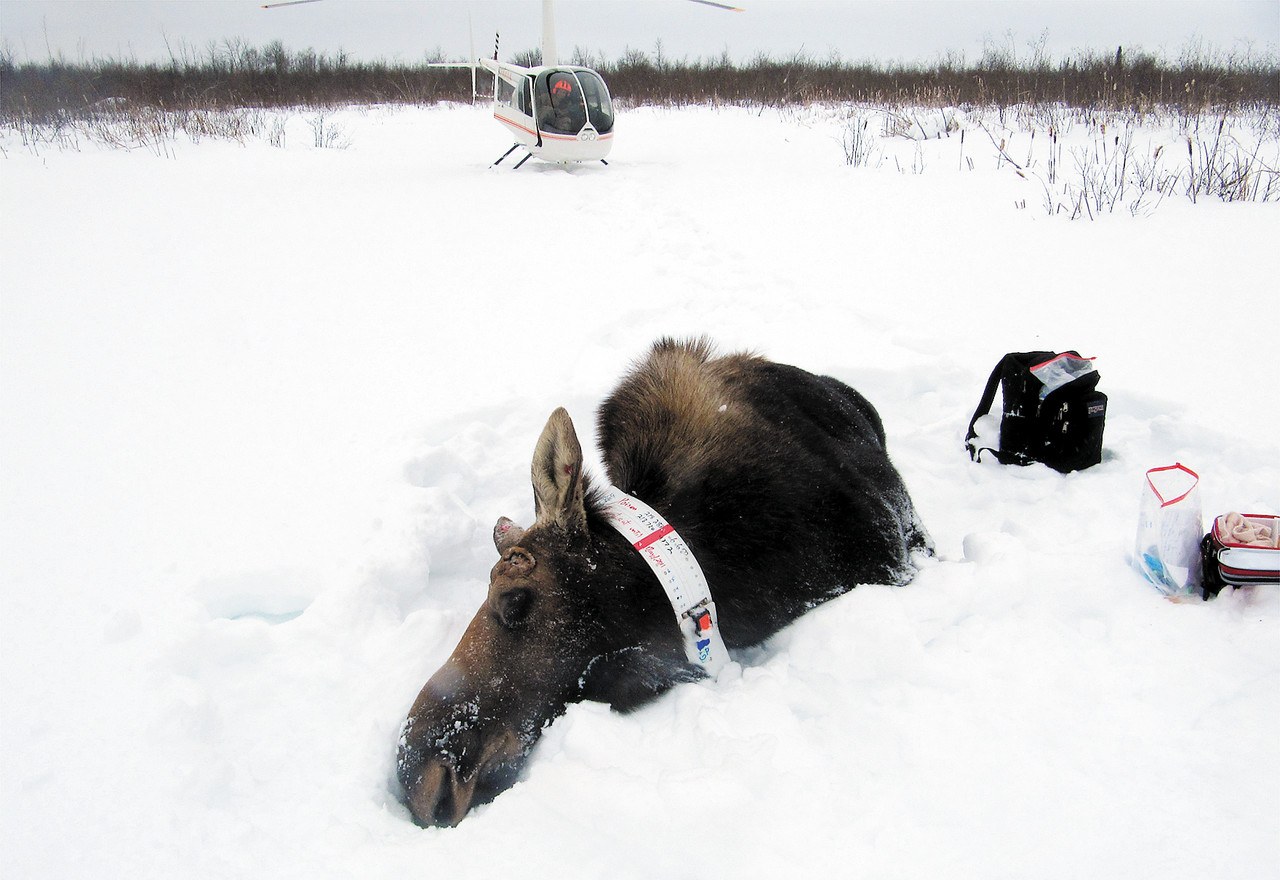Support the Timberjay by making a donation.
New tools to aid moose study
Researchers hope to use new data to make forest management recommendations
An international team of wildlife researchers is getting a closer look at moose behavior than has ever before been possible.
The team, which includes researchers from the Natural Resources …
This item is available in full to subscribers.
Attention subscribers
To continue reading, you will need to either log in to your subscriber account, or purchase a new subscription.
If you are a current print subscriber, you can set up a free website account and connect your subscription to it by clicking here.
If you are a digital subscriber with an active, online-only subscription then you already have an account here. Just reset your password if you've not yet logged in to your account on this new site.
Otherwise, click here to view your options for subscribing.
Please log in to continue |
New tools to aid moose study
Researchers hope to use new data to make forest management recommendations
An international team of wildlife researchers is getting a closer look at moose behavior than has ever before been possible.
The team, which includes researchers from the Natural Resources Research Institute, the 1854 Authority, the National Park Service, the Fond du Lac Band, and the Ontario Ministry of Natural Resources, recently fitted a total of 63 moose in northeastern Minnesota and northwestern Ontario with state-of-the-art transmitters that will provide greater detail than previously possible on how moose utilize their forest habitat.
Researchers hope to use the data to make forest management recommendations that help to slow or reverse the steady decline of the region’s moose population.
Researchers are examining moose populations in Voyageurs National Park, Quetico Provincial Park, and near Grand Portage and Isabella, and animals in each area were fitted with transmitters over the past couple of weeks. Most of the animals were tranquilized, in part because the deep snow prevented the capture team from deploying nets, which is generally easier and less stressful on the animals.
For many of the moose targeted for the study, it wasn’t the first time they had been fitted with transmitters. Researchers had fitted a total of 12 moose with transmitters last winter at Voyageurs. One of those animals had died shortly after capture but the other 11 survived and were recaptured this year for fitting with new devices. An additional eight moose were added to the study at Voyageurs this year, including six that were located outside the park boundaries.
A total of six moose in the Quetico were also collared. It was the first time that the Ontario park was included in the ongoing research.
According to Ron Moen, who is coordinating the study for NRRI, the new transmitters operate like cell phones, providing updated information on moose movements directly to researchers’ computers every twenty minutes. “So I never have to get out of my chair to see what my moose are doing,” said Mike Schrage, a biologist with the Fond du Lac Band.
The devices also track temperature and activity data that should help researchers learn much more than ever before on how moose utilize habitat under various conditions. “Not only can we know whether they’re moving or not, but whether they’re feeding or resting,” said Schrage.
Researchers have speculated that climate change could be affecting moose populations in some areas, and the new data should allow biologists to determine whether such factors could be playing a role here in Minnesota.
Researchers are particularly interested in seeing how moose use different forest habitats, not only during cold weather, but during summer heat. “If we get a location in a deep conifer stand and the activity censor shows the animal was resting, we can assume it was using the area for cover,” said Schrage.
Given the level of detail, researchers are optimistic they’ll now be able to start answering key questions that have long concerned biologists. ”If we can’t figure it out with this, there’s not much else we can do,” said Moen.
The $1 million research project is being funded by a combination of sources, including the Legislative and Citizens Commission on Minnesota Resources, the National Park Service, the Fish and Wildlife Service, and the Ontario Ministry of Natural Resources.






